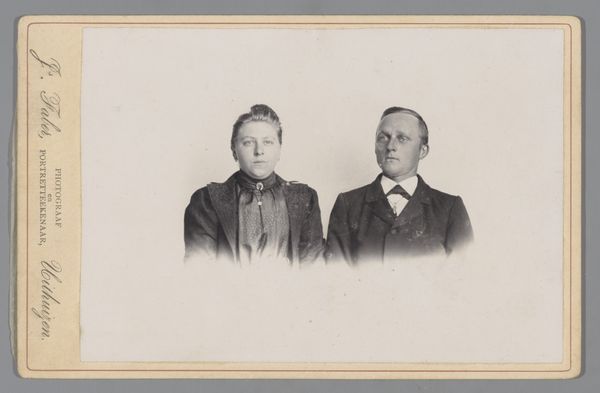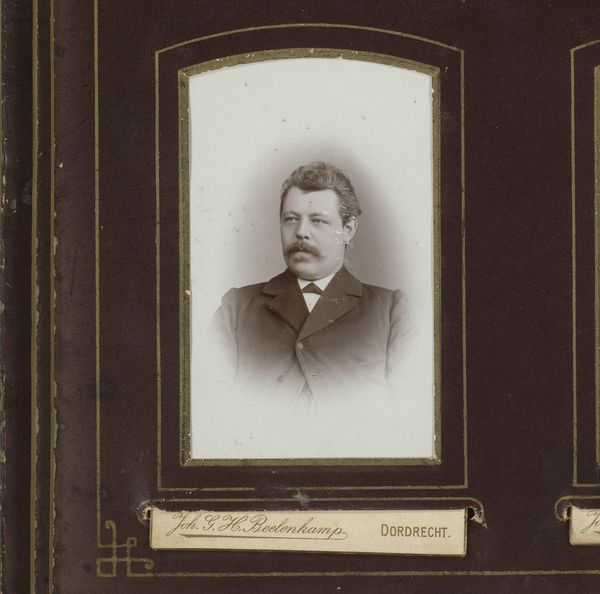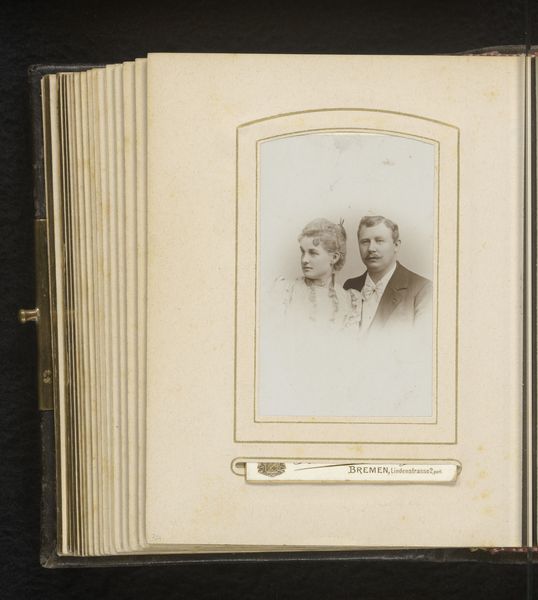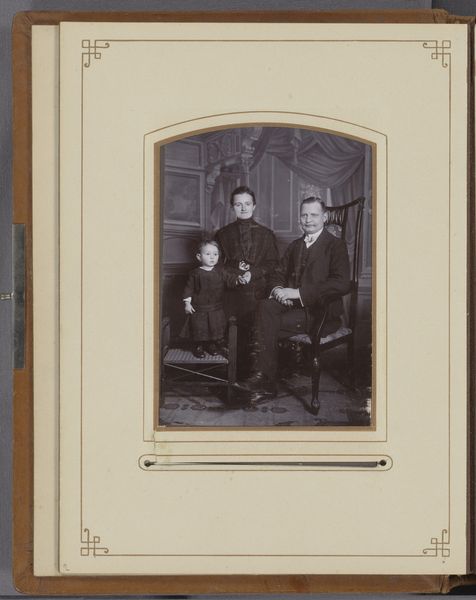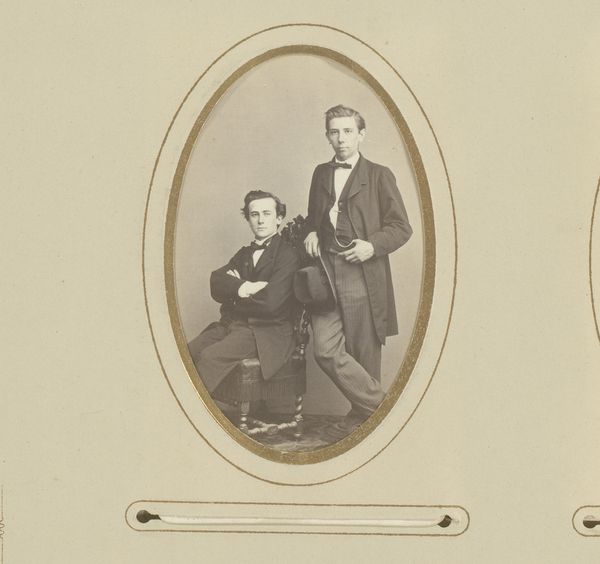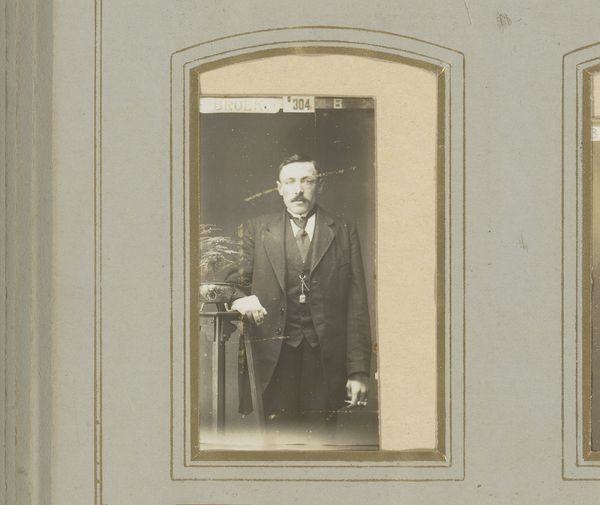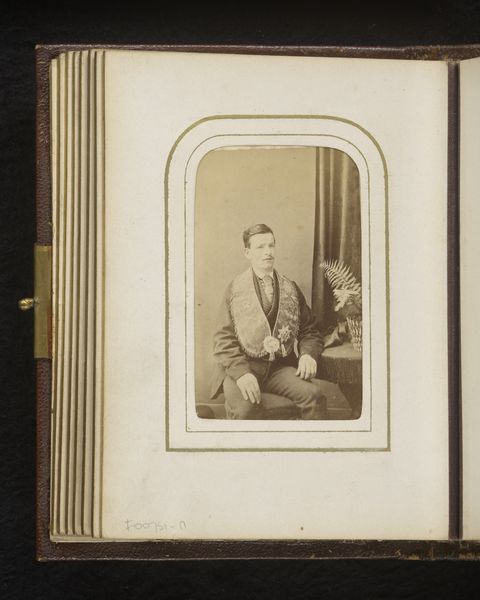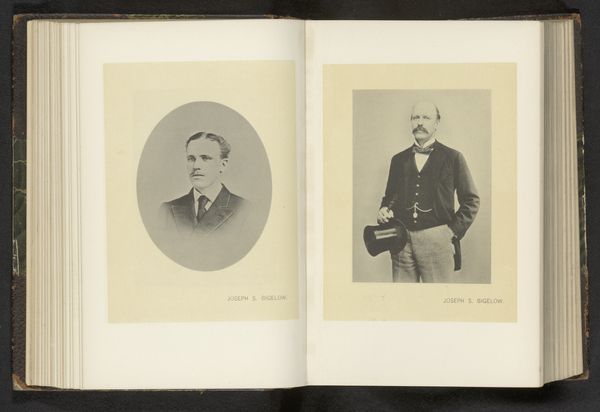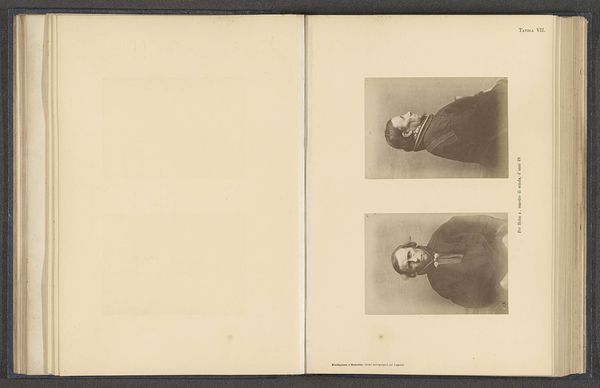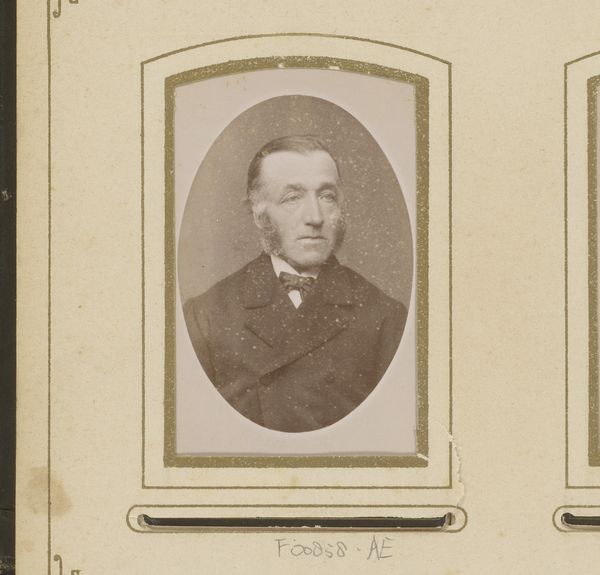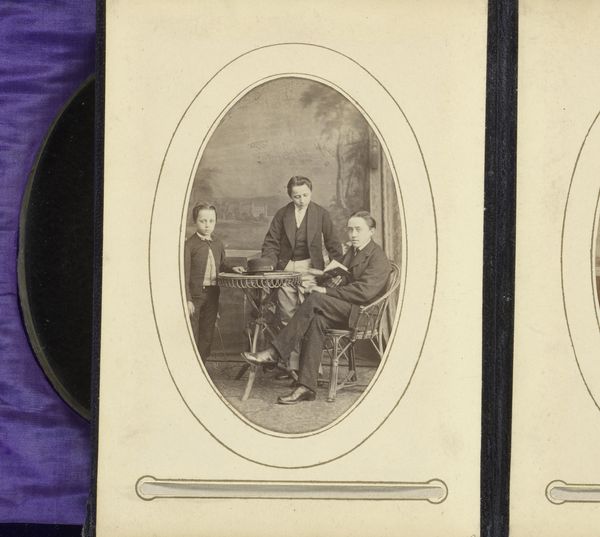
photography, collotype
#
portrait
#
photography
#
collotype
#
modernism
Dimensions: height 110 mm, width 146 mm, height 189 mm, width 247 mm
Copyright: Rijks Museum: Open Domain
Curator: Before us, we have Willem Witsen’s “Kloos en Boeken,” a collotype print that likely dates between 1860 and 1915, part of the Rijksmuseum collection. Editor: It's… intense. Both figures stare out with such gravity. The sepia tone gives it this weighty, historical feel, like a document unearthed from a dusty archive. Curator: Indeed. Witsen, known for his connections to literary figures, captures the writer Willem Kloos here, maybe we see also the books and texts Kloos held dear, items related to labor that influenced Witsen, as the printing technique here, collotype, afforded artists the capability to generate numerous prints directly from photographic negatives, allowing these to reach more people, it feels connected somehow. Editor: It also feels like the books possess these men; or, perhaps, the other way around. Are the dark surroundings enveloping them or is that glow? Kloos in particular. Did Witsen deliberately pose his subject to emphasize that? It creates this feeling of solemn introspection. Curator: Possibly. It would be remiss not to note collotypes require a complex printing process. Each print is essentially a unique impression. Witsen may also be subtly engaging with ideas of value here, art or commodity... or both. The surface and materiality have this handmade character. Editor: Well, it works! The contrast between light and shadow, the focused expressions, makes me want to invent stories about these guys. A portrait is like that—a conversation paused in time. Who are they? What was their world like? Were they friends? Enemies? There's such psychological depth achieved here, almost accidentally it feels. Curator: Yes, though accidental or not, it relies upon both the artist's labor and a technology of reproduction made tangible through specific materials—glass, chemicals, and ink – a network of production brought together here to create this image. Editor: Absolutely. The piece feels both anchored to a specific time while also managing to pose questions about identity and presence that are still very relevant. What are they thinking, I wonder? Curator: Indeed. Food for thought... and another demonstration of how photography intertwines material practice and the aesthetics of everyday life. Editor: Thanks! And I will remember their pensive expressions. I'm taking with me that strange power stillness can possess.
Comments
No comments
Be the first to comment and join the conversation on the ultimate creative platform.
